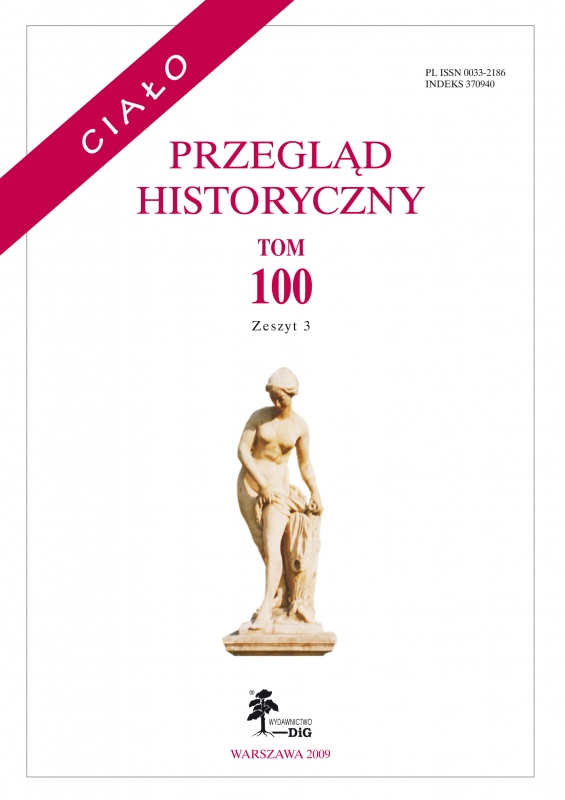Kobiety, asceza i władza nad ciałem w późniejszym średniowieczu
Abstrakt
Women, asceticism and command over one’s body in the Later Middle Ages
The article discusses ascetic practices of women during the Middle Ages on the examples of thirteenth century Polish saintly duchesses: Hedwig of Silesia, Kinga of Poland, Salomea of Poland, and Anne of Bohemia. The author disagrees with the opinion that ascetic practices led to the deterioration of health of the saintly women. Calling upon the research of Caroline W. Bynum, he points out that asceticism was aimed not at degrading one’s body, but at its controlling, with sanctification in mind. Some of the practices administered to themselves by the duchesses, like self–flagellation or feet injuring, evidently followed the pattern of the Lord’s Passion. G. Pac notices also that entrance upon the ascetic path was a conscious decision, and had the external effect of limiting the authority of men over the women in question. Their husbands with regard to sexual intercourses, and their confessors and bishops could do little as to limiting their asceticism. The women acquired also — according to Jo A. McNamara — a certain power in winning God’s graces, also for their husbands who, thanks to their prayers, e.g. won battles. St. Hedwig of Silesia also taught her husband new prayers.
The author points to a paradoxical convergence between the body of a medieval woman practicing asceticism and the postmodern vision of the body proposed by Zygmunt Bauman. Both bodies are subjected to self–control and directed at intensive reception of sensations – sensations which are satisfying, in the case of the postmodern body, and which bring pain, in the instance of the medieval ascetic.
The author emphasizes that independence of these women was not complete. Practicing asceticism required prior consent of their husbands. Moreover, as Norbert Elias pointed out, the courage to take up such practices independently was conceivable only within the framework of the social structures and elites specific for the Later Middle Ages.

